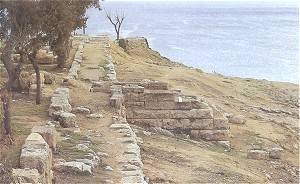|
|
 William Smith,
A Smaller History of Ancient Greece
William Smith,
A Smaller History of Ancient Greece|
|
CHAPTER I
Geography of Greece

REECE is the southern portion of a great peninsula of Europe, washed on three sides by the Mediterranean Sea. It is bounded on the north by the Cambunian mountains, which separate it from Macedonia. It extends from the fortieth degree of latitude to the thirty-sixth, its greatest length being not more than 250 English miles, and its greatest breadth only 180. Its surface is considerably less than that of Portugal. This small area was divided among a number of independent states, many of them containing a territory of only a few square miles, and none of them larger than an English county. But the heroism and genius of the Greeks have given an interest to the insignificant spot of earth bearing their name, which the vastest empires have never equalled.
The name of Greece was not used by the inhabitants of the country. They called their land HELLAS, and themselves HELLENES. At first the word HELLAS signified only a small district in Thessaly, from which the Hellenes gradually spread over the whole country. The names of GREECE and GREEKS come to us from the Romans, who gave the name of GRAECIA to the country and of GRAECI to the inhabitants.
The two northerly provinces of Greece are THESSALY and EPIRUS, separated from each other by Mount Pindus. Thessaly is a fertile plain enclosed by lofty mountains, and drained by the river Peneus, which finds its way into the sea through the celebrated Vale of Tempe. Epirus is covered by rugged ranges of mountains running from north to south, through which the Achelous the largest river of Greece, flows towards the Corinthian gulf.
To Chapter II :
Origin of the Greeks, and the Heroic Age 
Back to the History of Ancient Greece Contents
Reference address : https://ellopos.net/elpenor/greek-texts/ancient-greece/history-of-ancient-greece-1-geography.asp